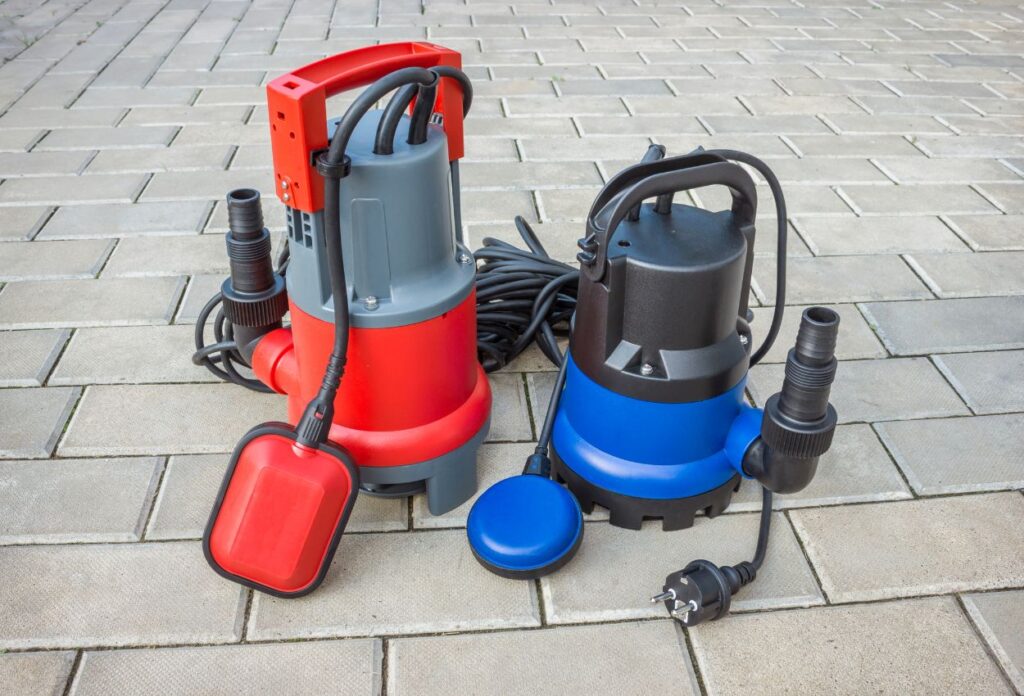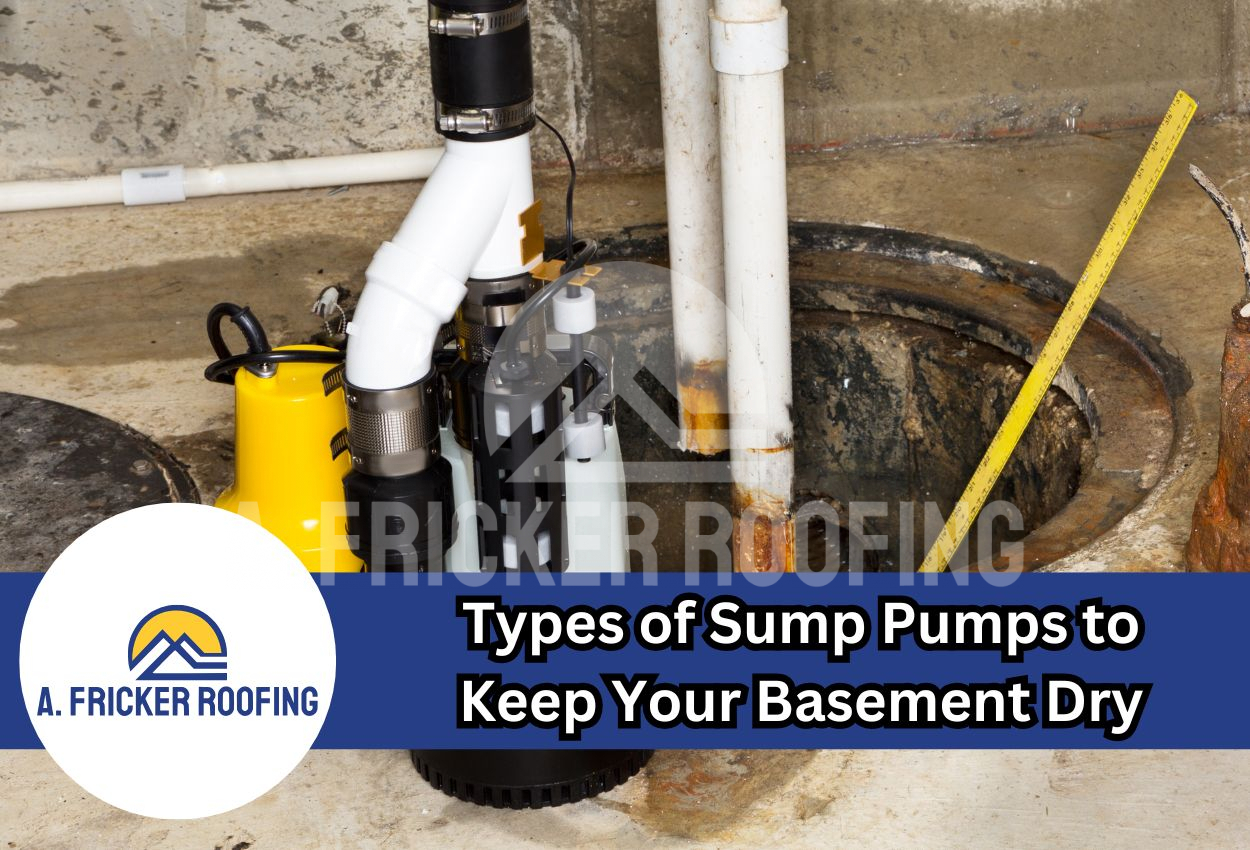When it comes to protecting your home from water damage, a sump pump is a necessary tool. If you own a home with a basement or crawl space, having a reliable sump pump can prevent major damage caused by heavy rains, melting snow, or groundwater seepage.
There are several types of sump pumps available, and you should know about each before you choose one for your home.
In this guide, we’ll explain the different types of sump pumps available, along with their pros and cons so you can decide which one might be best for keeping your basement dry and safe from water damage.
What Is a Sump Pump?
A sump pump is a type of water pump that is installed in the lowest point of a basement or crawl space. It sits in a pit (called a sump basin) that collects water. When the water level in the pit rises, the pump activates and moves the water away from your home through a discharge pipe. This prevents flooding and reduces the risk of water-related foundation issues.
Also Read: What Is a Sump Pump and How Does It Help Your Basement?
Why Do You Need a Sump Pump?
All homes, even if they have flat roofs, which are common among homeowners in urban and suburban areas, can benefit from a sump pump. During heavy rain, excess water can seep into the foundation around your home. A sump pump helps manage this water efficiently, preventing basement flooding and protecting your home’s structural integrity.
Types of Sump Pumps
Homeowners can choose from a few types of sump pumps depending on their needs. Here is a quick overview:
- Primary Sump Pumps: Submersible and pedestal sump pump
- Secondary Sump Pumps: Electric and water-powered sump pump
Choosing the right one depends on factors such as the size of your basement, the water table level, and your budget.
Submersible Sump Pump

How it works: A submersible sump pump, just like its name, is submersed directly inside the sump basin (sump pit) underground. It has a motor encased in a waterproof housing to prevent damage. When the water level in the pit rises, the pump automatically activates, drawing water in and pushing it out and away from your home. This submersible pump works fully under water, perfect for areas that receive frequent rainfall.
Pros Of Submersible Sump Pump
- Powerful and efficient, making it ideal for homes with frequent or heavy flooding, as it can pump large volumes of water quickly and consistently.
- Quieter operation since the motor is submerged. Since the pipe works when it’s covered with water, you might not hear the motor. This reduces noise levels and makes it less disruptive in living spaces.
- Compact design takes up less space, making it less obtrusive in the basement area and allowing for better space utilization.
Cons Of Submersible Sump Pump
- More expensive upfront compared to pedestal pumps, which may be a deterrent for budget-conscious homeowners.
- Harder to access for maintenance due to its submerged placement, making repairs and inspections more complicated.
- Shorter lifespan (average 5 to 10 years) due to constant water exposure, which can accelerate wear and tear on the components.
Best for: Homes with frequent or heavy flooding, large basements, or high water tables.
Best Submersible Simp Pump: There are several sump pumps available but when it comes to submersible sump pumps, Zoeller M53 is a popular choice.
Pedestal Sump Pump
Are all sump pumps submersible? No. Let’s take a look at the pedestal sump pump.
How it works: A pedestal sump pump has a motor mounted above the sump basin, while the pump component sits in the pit. The motor remains dry and safe from water exposure. When water rises in the sump pit, the pump draws it up through a pipe and discharges it away from the house.
Pros Of Pedestal Sump Pump
- More affordable and easier to install, making it a practical choice for homeowners with occasional water issues or those on a budget.
- Lifespan depends on your usage, but generally, a pedestal sump pump can last longer with an average of around 10 to 15 years. This is because the motor is kept dry, reducing the risk of water damage and increasing reliability.
- Easier to maintain and repair since the motor is external and easily accessible, simplifying regular upkeep and servicing.
Cons Of Pedestal Sump Pump
- It is noisier than submersible sump pumps since the motor here is exposed. Also, since the motor is in the basement, the sound can echo further. This can be disruptive in basements used as living or recreational spaces.
- Less powerful than submersible pumps, making it less effective for homes that experience frequent or severe flooding.
- Takes up more space due to its external motor, which may be inconvenient in smaller basements with limited room.
Best for: Smaller basements or homes that experience occasional water issues.
Best Pedastal Sump Pum: Consider sump pumps from Everbilt. There are multiple models, including the 1/3 HP Cast Iron Sump Pump.
Battery Backup Sump Pump
How it works: A battery backup sump pump serves as a secondary system that activates during power outages or when the primary pump fails. It operates using a rechargeable battery, which powers the pump and allows it to continue removing water even when electricity is down.
Pros Of Battery Backup Sump Pump
- Provides extra protection during storms or power failures, keeping your basement dry when the main pump is non-functional, reducing the risk of flooding.
- Offers peace of mind if you live in an area areas prone to power outages, as it ensures continuous operation during emergencies.
- Easy to install alongside your primary pump, creating a seamless and effective backup system without requiring major modifications.
Cons Of Battery Backup Sump Pump
- Requires regular battery maintenance and occasional replacement, adding to the long-term cost of ownership and maintenance.
- Limited run time based on battery capacity, meaning it may not last through prolonged power outages, making it less reliable for extended events.
Best for: Homes in regions prone to storms or with unreliable power.
Best Battery Sump Pump: For a battery backup sump pump, Aquanot® Fit 508 is a good option. This comes with a 12-volt battery backup and connects to Wi-Fi for consistent monitoring.
Water-Powered Sump Pump
How it works: A water-powered sump pump uses the pressure from your home’s municipal water supply to remove water from the sump pit. When the water level rises, the system activates, using the incoming water pressure to create a vacuum that pumps the accumulated water out.
Pros Of Water-Powered Sump Pump
- Reliable during power outages since it doesn’t rely on electricity or batteries, ensuring continuous operation in emergencies.
- Minimal maintenance is required due to fewer moving parts, making it a low-maintenance and hassle-free option.
- Long-lasting and durable because it doesn’t suffer from battery degradation or motor wear, making it a long-term solution.
Cons Of Water-Powered Sump Pump
- Suitable for homes with high water pressure so it can only be used in areas with these conditions.
- Can increase your water bill due to its reliance on municipal water supply, potentially raising monthly operating costs.
- Less powerful than electric pumps, making it unsuitable for homes with frequent or severe basement flooding.
Best for: Homes with consistent water pressure and those seeking a low-maintenance backup system.
Best Water-Powered Sump Pump: Consider the Sump Jet 660-1185 by Liberty Pumps. This option has a PVC body and efficiently removes water from your basement.
Top Basement Waterproofing Services In Oklahoma
Installing the right sump pump is important to protect your basement from water damage. If you are still not sure whether you need a powerful submersible pump, a cost-effective pedestal model, or the added security of a battery backup, we can help you.
At A. Fricker Roofing and Waterproofing, you get the best experts with experience in both exterior and interior basement waterproofing. Whether installing a new sump pump or a French drain, we can help. Contact us today at (918) 402-7167.

